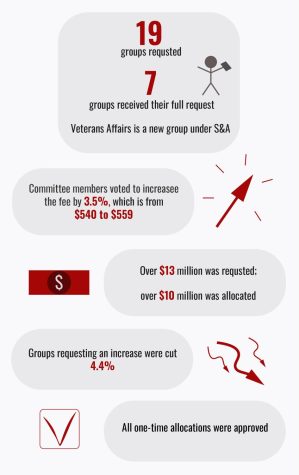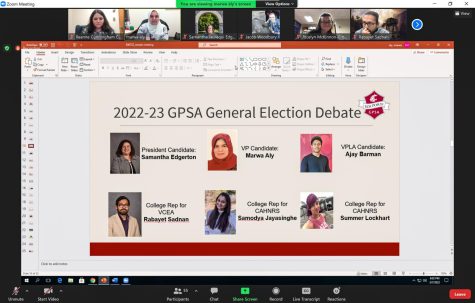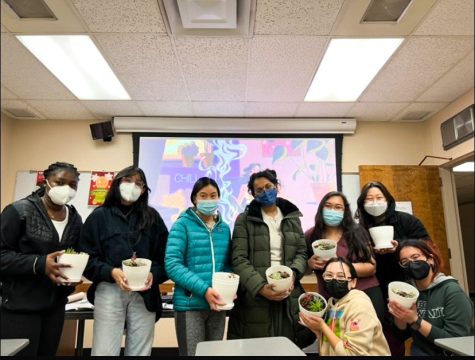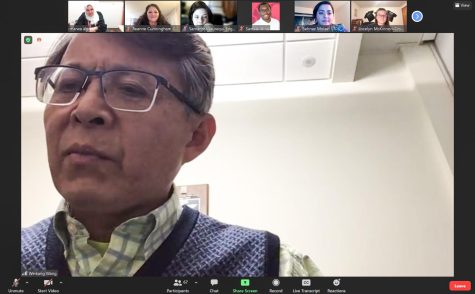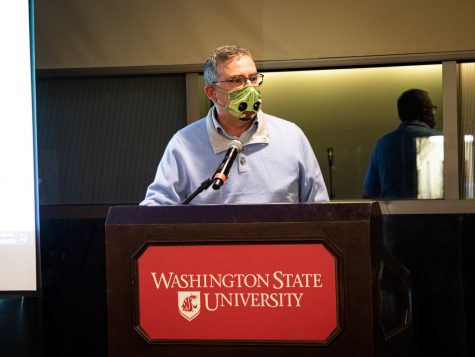Grad students showcase research
GPSA expo studies ranged from apples to virtual reality
ANGELICA RELENTE | THE DAILY EVERGREEN
Ewa Pietrysiak, a graduate student in the School of Food Science, presents during the GPSA Research Expo on Thursday.
April 2, 2018
Apples may still harbor bacteria following a standard wash, but a WSU graduate student is looking into cleaner ways to package fruit.
Ewa Pietrysiak, who presented her studies at the Academic Showcase and GPSA Research Expo on Thursday, stood in front of a poster with magnified images of listeria innocua, a bacteria that can linger in apples’ stems, cracks and calyxes.
Pietrysiak, a School of Food Science graduate student, presented her research on apple peel morphology and the attachment of listeria innocua. She studied the relationship between an apple peel’s microstructure and the attachment of bacteria in aqueous environments, according to her abstract.
Pietrysiak is advocating for a better way to package apples after conducting an experiment about the effectiveness of just washing, sanitizing and waxing after picking.
“This research shows us that we need to find more efficient methods,” Pietrysiak said.
Jing Sun, director of strategic planning and scholarship, said there was a total of 70 graduate and professional students in the competition. There was also a good combination of judges, she said, which included Jeff Melton, senior engineering program manager at Microsoft Corporation.
David Silva, a College of Communication doctoral student, experimented with the similarities and differences between a virtual reality system and a standard desktop computer. The five outcomes he measured were flow, presence, immersion, embodiment and emotional response. Embodiment is the feeling of being physically present but also being able to interact with the environment, he said.
“VR cuts out all of the distractions,” Silva said. “You’re not texting in VR, right?”
Dishary Banerjee, a School of Mechanical and Materials Engineering graduate student, presented her and her colleagues’ research on 3-D printing of restorable porous calcium phosphate scaffolds, which may be able to aid bone healing. Once they printed a scaffold, they inserted it in an animal model to study how it helps with the bone formation, Banerjee said. Results show this method may accelerate the healing process of a bone.
“There is a report of one fracture in every three seconds across the country,” Banerjee said, “so it’s huge.”
Winners from the GPSA Research Expo will be invited to the GPSA Excellence Awards Luncheon from 11 a.m. to 1 p.m. April 18.











